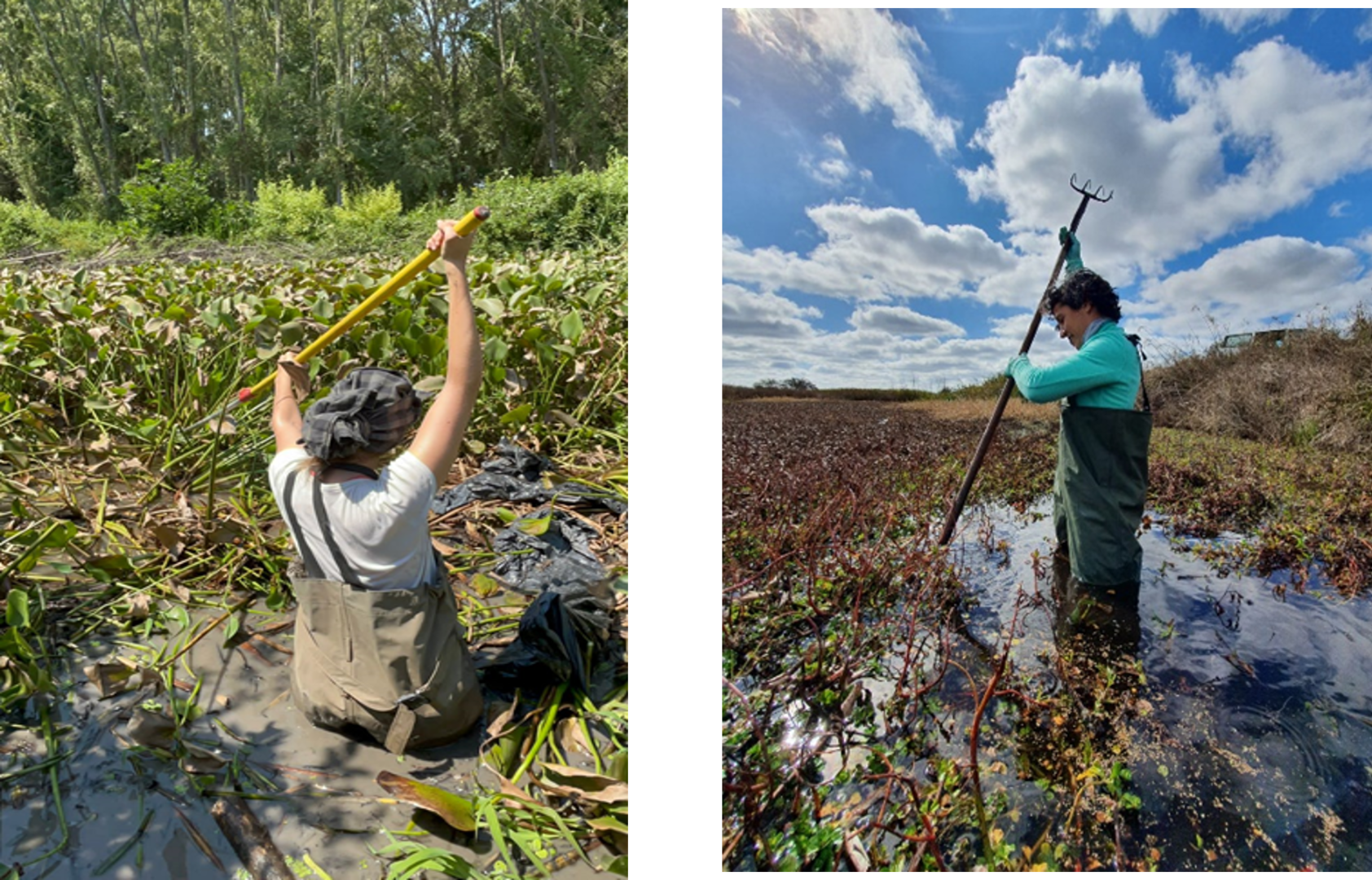Resuming Evaluation of a Mining Fly as Biocontrol Agents of Water Hyacinth
By Laura Varone, Cristina Hernandez and Sol Bovina
Water hyacinth is an aquatic weed native to the Amazon and Parana basins that has invaded 55 countries worldwide over the last century. Water hyacinth has become an extremely serious weed that affects water quality by reducing the amount of dissolved oxygen and light penetration, and affecting every aspect of water use. Since the 1960s, researchers have been searching for biological control agents to reduce the density of this invasive plant, and several have been released since the 70s in the US, with varying success. In search for additional agents to release in the U.S., two fly species (Thrypticus truncatus and T. sagitattus) that mine waterhyacinth petioles were evaluated as biological control agents for the Water Hyacinth 15 years ago in Argentina. The flies were prevalent and widespread (Figure 1), but their damage was deemed difficult to quantify, and their breeding conditions hard to reproduce in laboratory conditions, such that the project was discontinued for several years. However, toward the end of 2021, the project was resumed and we have been sampling sites in in the southern Parana Delta periodically to obtain insects for further research (Figure 1).
The immature larvae of these flies mine the petiole of the water hyacinth and emerge as adults (Figure 2). Foundation for the Study of Invasive Species (FuEDEI) is developing a rearing protocol for these flies, and adjusting it to conduct specificity tests on plant species related to its host. We have collected a total of 6876 petioles and recovered 2681 adult flies. Over the past two years we have found that the two fly species increase their abundance at different times throughout the season. We have tried different methods to encouraged mating and oviposition to rear the flies in laboratory conditions. Recently, we have obtained positive results with the latest method, which involves releasing adults periodically in small cages that contain dense plant stands in nutrient rich water (Figure 3). We expect to continue improving rearing methods, and making progress in specificity tests, to determine if these insects are safe to be release in environments where water hyacinth is a problem.
 Figure 1. Collection of Thrypticus-infected water hyacinth petioles in the Parana Delta area, Buenos Aires, Argentina.
Figure 1. Collection of Thrypticus-infected water hyacinth petioles in the Parana Delta area, Buenos Aires, Argentina.

Figure 2. Life cycle of the mining flies Thrypticus spp.

Figure 3. Cage containing dense stands of water hyacinth in nutrient-rich water where adult flies are released for mating and oviposition.
For inquiries regarding this article contact: info@fuedei.org.
The Foundation for the Study of Invasive Species (FuEDEI), formerly known as the South American Biological Control Laboratory (SABCL), is located in Hurlingham, Argentina, near Buenos Aires. The SABCL/FuEDEI plays a crucial role collecting and providing candidate biological control agents for South American weeds and pest insects for federal and state cooperators, several U.S. universities, and research collaborators worldwide since 1962. FuEDEI’ s main mission includes exploring for natural enemies of target insects and weeds in Argentina and neighboring countries and conducting host-specificity testing to determine their safety for eventual release in the U.S. In addition, complementary research that investigates the ecology, behavior, taxonomy, and genetic differences based on geographic distribution is conducted on both targets and potential agents. Performing these studies in the region of origin of the target pest serves as an efficient prescreening process that reduces the number of biocontrol agent candidates shipped. This reduces the amount of quarantine work and valuable quarantine space occupation, the expenses related to permitting processes, the risks of escapes, and the release of maladapted or wrongly identified agents to a minimum, saving in costs and hazards. On some occasions these complementary studies help us understand why an exotic organism becomes invasive, which can, in turn, lead to determining novel strategies for their management.
